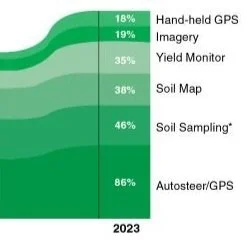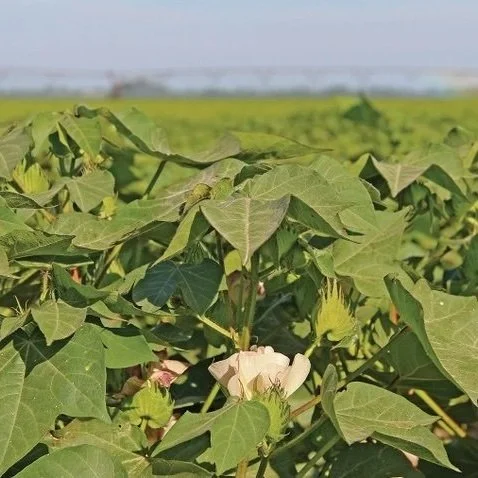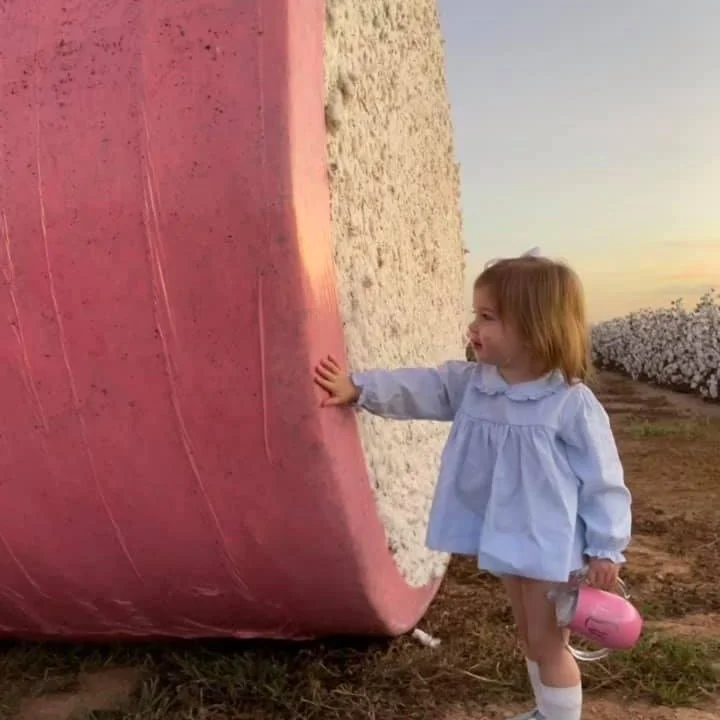Nationwide Partnership Advances Regenerative Agriculture in Cotton
Opportunities to advance sustainable cotton farming in the United States are growing thanks to a nationwide partnership led by the Soil Health Institute’s (SHI) United States Regenerative Cotton Fund (USRCF).
The fund’s holistic approach to advance economic insights, soil health measurement, and education has made significant progress in the U.S. Cotton Belt since its establishment, engaging more than 1,000 cotton farmers and their advisors.
Read More
NCC Announces Emerging Leaders Class for 2024-2025
Twelve U.S. cotton industry members have been chosen to participate in the National Cotton Council’s (NCC) Emerging Leaders Program for 2024-25.
Now in its ninth year, the NCC’s Emerging Leaders Program is supported by a grant to The Cotton Foundation from Bayer.
Read More
Another Second Chance Price Rally Still Not Enough For Cotton
Cotton will come around. But as we have repeatedly commented, the 2024 crop will have to be priced in 2025, most likely based on the May 2025 contract. It is just going to take that long before mills will approach 85% spinning capacity. Neither U.S. nor world carryover are burdensome. Thus, the inching upward of demand will pull prices along.
Read More
Market Update for Corn, Soybeans, Rice, and Cotton: May 2024
The 2024/25 U.S. corn outlook is for larger supplies, greater domestic use and exports, and higher ending stocks. The corn crop is projected at 14.9 billion bushels, 3 percent down from last year’s record as increases in yield helped partially offset decreased area. The yield projection of 181.0 bushels per acre is based on a weather-adjusted trend assuming normal planting progress and summer growing season weather, estimated using the 1988-2023 period.
Read More
Prepare To Price 2024 Cotton Late In The Marketing Season
Fundamentals drove cotton prices down to the mid-70s before selling ran out of steam and a small bit of demand brought prices back to the high 70s for old crop and the mid-70s for new crop. July found its support at 77 cents but slipped lower before recapturing the 78-cent mark, settling the week at 78.06. Likewise, December searched out its support at the 74-cent mark and settled the week at 75.97
Read More
USDA Announces 2024 Cotton Loan Rate Differentials
USDA’s Commodity Credit Corporation has announced the 2024 crop loan rate differentials for upland and extra-long staple cotton
The differentials, also referred to as loan rate premiums and discounts, were calculated based on market valuations of various cotton quality factors for the prior three years. This calculation procedure is identical to that used in past years.
Read More
Cotton Prices Trapped As Export Sales Continue With No Change In Demand
Low prices have encouraged export sales of all growths and U.S. cotton continues to move. Yet the level of sales is not sufficient to suggest that demand is improving. In fact, the level of sales does not even suggest any improvement in demand. Thus, cotton prices remain trapped within the narrow six cent, 77-83 cent trading range. The high 70s to low 80s trading range for both old crop and new crop will continue to prevail.
Read More
Precision And Agricultural Technology Adoption Trends in Cotton
One of Cotton Incorporated’s missions is to improve cotton production profitability through research. To make sure our research direction is addressing current challenges, and that past research results have had a positive impact, Natural Resource Surveys of U.S. cotton producers were conducted in 2008, 2015, and 2023.
Read More
USDA Announces 2024 Cotton Loan Rate Differentials
The U.S. Department of Agriculture’s (USDA) Commodity Credit Corporation today announced the 2024 crop loan rate differentials for upland and extra-long staple cotton.
The differentials, also referred to as loan rate premiums and discounts, were calculated based on market valuations of various cotton quality factors for the prior three years. This calculation procedure is identical to that used in past years.
Read More
Non-Dicamba Options For Midsouth Cotton Growers
Faced with the potential of a dicamba-free growing season, farmers across the country reevaluated their dependence on a long-time, highly effective herbicide tool. No class of farmers was more wary than cotton growers, whose yield relies on more intensive management with fewer effective herbicide options than any other dicamba-friendly crop.
Read More
Old Crop Cotton Supported As Price Creeps Lower
My best cotton friend in Lubbock says the market is going higher while my best buddy in Memphis says it’s going lower. Of course, I agree with my friends.
Read More
Is Cotton's Old Crop Rally Over?
In mid-December, the ICE May’24 climbed from 80 cents, peaking over 96 cents in February before settling back at its current level in the lower 90s. Similarly, the July’23 contract peaked over a dollar before retreating back to the lower 90s.
Is the old crop rally in cotton futures over? Maybe. Maybe not. Does it matter much to growers? Well, that depends.
Read More
USDA Summary Of 2024 Planting Intentions
According to Dow Jones' survey of market analysts, USDA is expected to announce 92.0 million acres of corn plantings in 2024, down from 94.6 million acres in 2023. For soybeans, 86.3 million acres are expected to be planted in 2024, up from 83.6 million acres in 2023.
Read More
Trust Protocol Expands Regional Field-Level Grower Support System
The U.S. Cotton Trust Protocol is introducing an expanded field-level team dedicated to providing regional support for U.S. cotton growers participating in the voluntary sustainability initiative. This includes aiding producers with finalizing Trust Protocol enrollment and data entry as well as applications for the Climate Smart Cotton Program by the April 30 midnight deadline.
Read More
Take on the Ag Tech Challenge
The ever-evolving framework of ag technology provides near-limitless resources for farmers looking to improve their efficiency and production down to a finite level – that is, if they can figure out how to work the darn stuff. And, even for students of the land educated beyond the school of hard knocks a father or father figure could provide, the pool of resources is just deep and dark enough to sink rather than swim.
Self-proclaimed “tech nerd” and Louisiana farmer Mead Hardwick of Hardwick Planting Co. has integrated a series of up-and-coming technologies on-farm over the years, starting with a family foundation.
Read More














